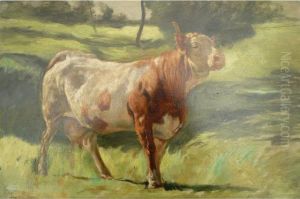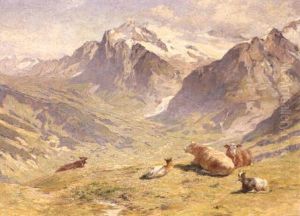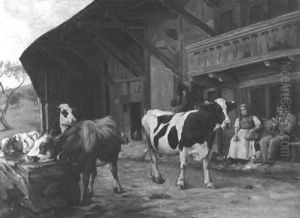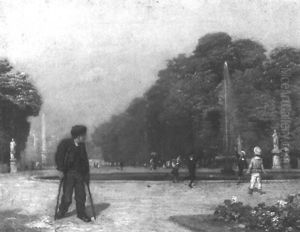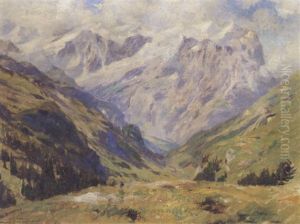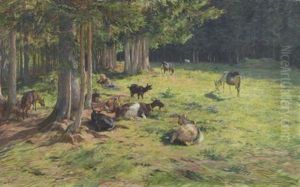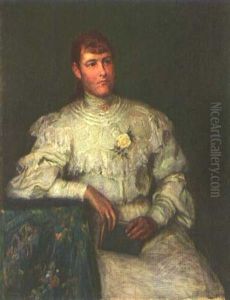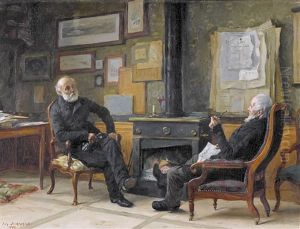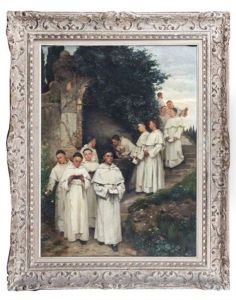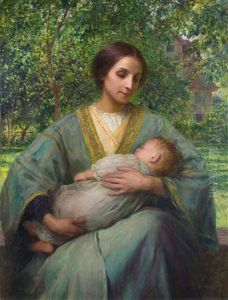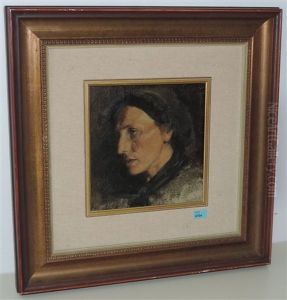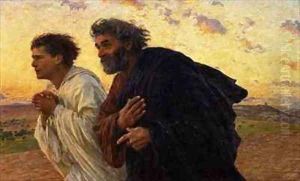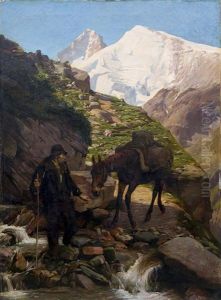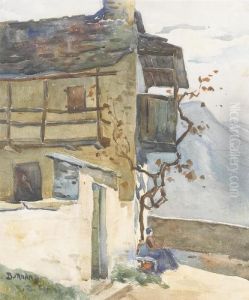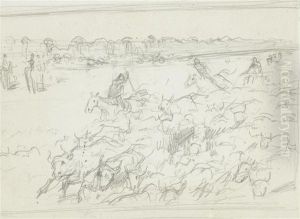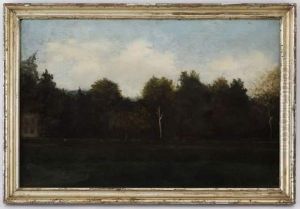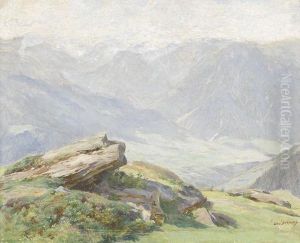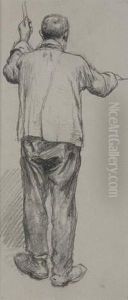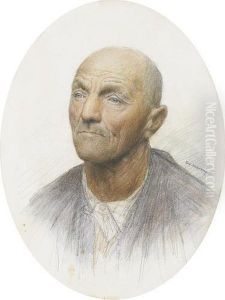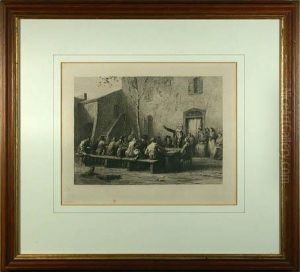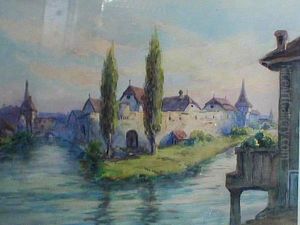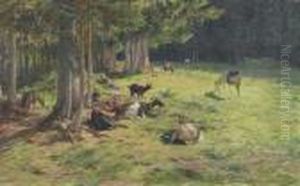Eugene Burnand Paintings
Eugène Burnand was a notable Swiss painter and illustrator, renowned for his realistic portrayals and exceptional ability to capture the human soul through expressions and landscapes. Born on August 30, 1850, in Moudon, Switzerland, Burnand's passion for art was evident from an early age. He pursued his artistic education at the École des Beaux-Arts in Paris, where he was heavily influenced by the Realist movement, a deviation from the Romantic and Classical styles that dominated the period. His early works were primarily landscapes, reflecting the beauty of the Swiss countryside, but he gradually shifted focus to capturing human emotions and narratives, which would define his later work.
Throughout his career, Burnand was fascinated with capturing moments of profound emotion and spirituality. Perhaps his most famous works are those that depict scenes from the New Testament, particularly the series of drawings based on the Parables of Jesus. His masterpiece, 'The Disciples Peter and John Running to the Sepulchre on the Morning of the Resurrection', showcases his exceptional skill in portraying intense emotion and spiritual fervor. This painting is celebrated for the vividness of the disciples' expressions, capturing a moment of both astonishment and hope, and is often cited as one of the most emotive representations of biblical scenes in modern art.
Burnand's contributions to art were not limited to religious subjects. He also painted portraits, landscapes, and scenes from daily life, demonstrating a broad range of subjects and styles. His ability to depict the intricate details of nature and human expression won him numerous awards and recognition in his lifetime. Beyond painting, Burnand was an accomplished illustrator, contributing to various publications and projects, which further broadened his impact on the art world.
Despite his success, Eugène Burnand's work fell into relative obscurity in the years following his death on February 4, 1921. However, recent years have seen a resurgence of interest in his art, with exhibitions and scholarly works re-evaluating his contribution to the field. Burnand's legacy now stands as a testament to the power of realism and emotional depth in art, bridging the gap between the tangible world and the spiritual.
